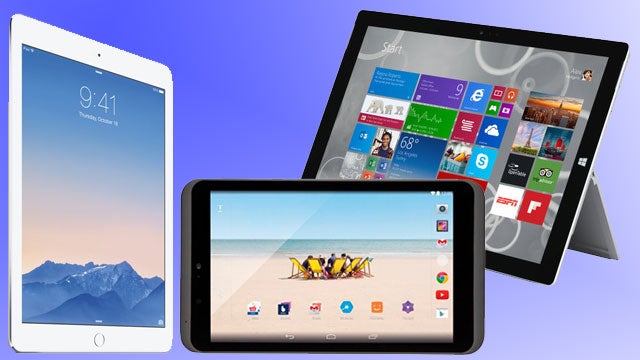Tablet Buyer’s Guide: all you need to know

Below are some of the key terms and phrases you’ll hear when buying a tablet, along with an explanation of what they mean.
Operating system: The core software running on the tablet – Google Android, iOS or Windows.
Processor (or CPU and GPU): This is the tablet’s brain – how fast it opens and uses apps, and how well it runs games.
Resolution: How sharp the screen (or display) of the tablet is. It’s measured in pixels and pixels per inch (ppi). The higher the number, the sharper the screen. Anything over 300ppi or that’s refered to as Full HD or Retina is pin-sharp.
Aspect ratio: This refers to the way the screen’s laid out. Normal aspect ratios are 16:9 (16 parts wide to 9 parts tall), 16:10 and 4:3.
Chassis: The chassis refers to the body of the tablet, what it’s made of and how it feels to hold
Internal storage: How much room the tablet has to store things like pictures, music, apps and movies. It’s measured in GB (gigabytes).
microSD storage: Some tablets let you insert a small card to increase storage. This is generally a cheaper way of getting lots more space on your tablet.
Apps: Programs that are specifically made to work on a tablet, such as Facebook or Angry Birds. When you open these they take over your screen
3G and 4G: These connectivity options enable Internet access via a mobile phone network while you’re on the move, with a 3G connection being slower than 4G. You’ll need the tablet to be 3G/4G compatible and you’ll need a contract with a mobile operator.
Home screens: These are the main screens on a tablet from which you can launch your apps. Think of them like your computer desktop.
Widgets: Android and Windows let you add widgets to your home screens. Widgets are windows into apps – for example, a weather widget will let you see what the temperature is without you actually having to open the app.


